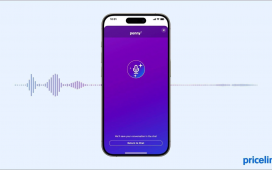Ray-Ban Meta smart glasses have been used to dox strangers. These smart glasses were paired with Artificial Intelligence (AI) and a Large Language Model (LLM) to violate the privacy of strangers, indicates a new report.
Meta Ray-Ban smart glasses used to dox strangers
Meta collaborated with Ray-Ban to introduce stylish glasses with integrated cameras. These smart glasses may not have a powerful SoC (System on a Chip) or a mobile computer, but their abilities are growing rapidly.
Two Harvard students have now paired these glasses with AI and LLM to dox individuals. According to 404 Media, these talented individuals managed to use the Meta smart glasses and AI to obtain a stranger’s information. Specifically speaking, they successfully harvested a subject’s name, occupation, and several other identifiable details using faces captured by the smart glasses.
Are we ready for a world where our data is exposed at a glance? @CaineArdayfio and I offer an answer to protect yourself here:https://t.co/LhxModhDpk pic.twitter.com/Oo35TxBNtD
— AnhPhu Nguyen (@AnhPhuNguyen1) September 30, 2024
The technique, dubbed I-XRAY, used this preliminary information to grab other, more sensitive information about the person. As reported by Engadget, AnhPhu Nguyen and Caine Ardayfio could get a person’s address, phone number, family member details, and partial Social Security Numbers.
How does the I-XRAY system work to identify random individuals?
Modern tech, especially audio-video equipment, is quite powerful. High-resolution cameras can see a person’s face. Once this data is captured, LLMs and AI can get to work on large datasets to guess the person’s identity.
Nguyen and Ardayfio opted for the Meta Ray-Ban smart glasses because they are relatively inconspicuous. Although these smart glasses look like regular glasses, they have miniature yet powerful cameras.
The Harvard duo published a video, wherein they explained how the smart glasses and AI tech work together to reveal the identity of a stranger. The setup involved a pair of Meta smart glasses, social media, AI, LLM, and an app.
The students plugged in the video stream from the Meta Ray-Ban smart glasses into Instagram. A computer monitors this stream. An AI program runs in the background to detect someone’s face.
The I-XRAY system pulls more photos of that person from the web along with public information about them. This information flows into a mobile app that Nguyen and Ardayfio built. The app attempts to match the collected data with information scoured from the internet and social media platforms.
It is important to note that Meta and Google could infuse facial recognition into a camera feed for years. However, neither of the companies have released this to the public. What is concerning is that off-the-shelf smart glasses can capture faces that can be fed into AI and matched with readily available information in the public domain to identify strangers.












